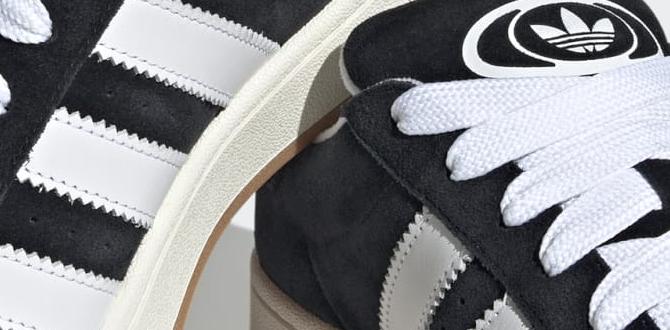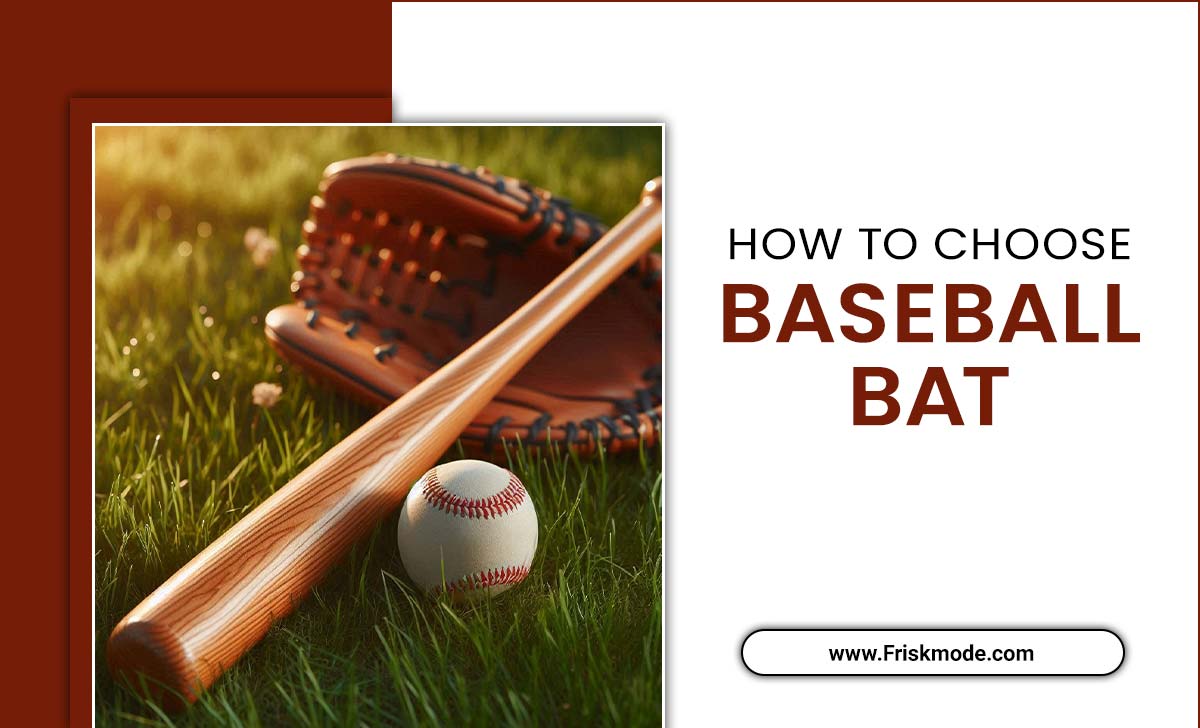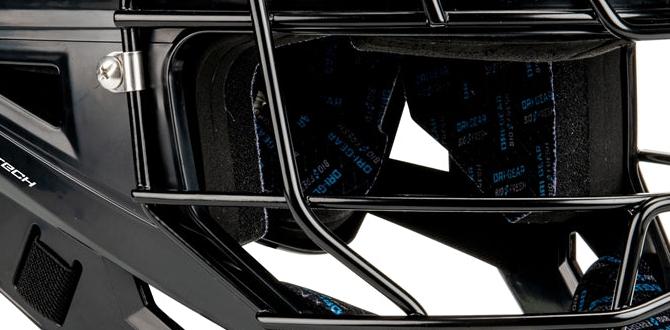A catcher’s helmet for adults is crucial for protecting your head and face from impact. Choosing the right one ensures comfort, a secure fit, and maximum safety during the game, preventing serious injuries. Properly fitted gear allows you to focus on your performance with confidence.
Stepping up to the plate as an adult catcher means embracing a vital, high-impact position. One of the most critical pieces of equipment you’ll ever wear is your catcher’s helmet. It’s your primary defense against foul balls, errant pitches, and collisions. But with so many options out there, how do you pick the right one? It can feel overwhelming, especially if you’re new to the position. Don’t worry! This guide will break down everything you need to know about adult catcher’s helmets, making sure you’re protected, comfortable, and ready to play your best game. We’ll cover what to look for, how to get the perfect fit, and why safety should always be your top priority.
Why Your Catcher’s Helmet is Non-Negotiable
In baseball, the catcher’s position is often called the “toughest job on the field.” You’re right behind home plate, facing fast pitches and susceptible to foul tips that can sting, and worse, injure. Unlike other positions, the catcher is in constant danger of direct impact to the head and face. A properly designed catcher’s helmet is your helmet and face shield combined, built to absorb and distribute the force of these impacts. It’s not just about looking the part; it’s about ensuring you can return to the game or your daily life without a concussion or serious facial injury.
The risks for adult players are significant. While reflexes are sharp, the speed of adult-level pitching can still be overwhelming. A stray pitch, a wild swing-back from the batter, or an accidental collision at the plate can lead to severe trauma. Statistics from organizations like the National Operating Committee on Standards for Athletic Equipment (NOCSAE) highlight the importance of certified protective gear. Choosing a helmet that meets these safety standards is the first and most important step in protecting yourself.
Key Features of a Quality Catcher’s Helmet
When you’re looking for an adult catcher’s helmet, several features stand out as essential for safety and performance. Think of these as the building blocks of reliable protection:
- ABS Shell or Composite Material: The outer shell is your first line of defense. Look for helmets made from sturdy materials like ABS plastic or advanced composite materials designed to withstand significant impacts. These materials help distribute the force of a blow away from your head.
- Inner Padding/Liner: This is what absorbs the shock. High-density foam or multi-layer padding is crucial. It should be comfortable, sweat-wicking, and provide a snug fit. Many newer helmets feature advanced technologies like shock-absorbing gels or strategic impact zones.
- Jaw Guard/Throat Guard: For catchers, the chin and throat are particularly vulnerable. Most adult catcher’s helmets come with a robust jaw guard that protects the face and jawline. A connected throat guard is also essential to prevent pitches or batted balls from sliding under the mask. Ensure it’s securely attached and offers good coverage.
- Ventilation: Playing catcher can get hot, especially during long games or practices. Helmets with good ventilation, often featuring strategically placed vents, help keep you cool and prevent sweat from dripping into your eyes, which can impair your vision.
- Chin Strap: A secure and adjustable chin strap is vital. It keeps the helmet firmly in place, even during intense movements. Look for padded straps for added comfort.
- Weight and Balance: While you want robust protection, the helmet shouldn’t be excessively heavy. A well-balanced helmet distributes weight evenly, reducing neck strain and allowing for quick head movements.
- NOCSAE Certification: This is arguably the most important feature. NOCSAE (National Operating Committee on Standards for Athletic Equipment) sets rigorous testing standards for athletic protective equipment. Ensure your helmet carries the NOCSAE seal of approval for catcher’s helmets. This means it has met specific performance requirements to reduce the risk of serious head and facial injuries.
Understanding Adult Catcher’s Helmet Sizing
Getting the right fit for your catcher’s helmet is as critical as its protective features. A poorly fitting helmet can be uncomfortable, slide around, and most importantly, fail to provide adequate protection when you need it most. Here’s how to find your size:
Measure Your Head Circumference:
- Get a flexible measuring tape.
- Wrap it around the widest part of your head, typically about an inch above your eyebrows and ears.
- Keep the tape snug but not too tight.
- Note the measurement in both inches and centimeters.
Consult Size Charts: Once you have your measurement, compare it to the manufacturer’s sizing chart. Most brands offer detailed charts that link head circumference to helmet sizes (e.g., S, M, L, XL). These charts are usually found on the product page or the manufacturer’s website.
Try Before You Buy (If Possible): The best way to ensure a proper fit is to try the helmet on. Here’s what to look for when trying one on:
- Snug But Not Tight: The helmet should feel snug all around your head without creating pressure points. You shouldn’t experience any looseness or wobbling.
- No Gap at the Forehead: When tilted forward, the helmet shouldn’t easily slide down your forehead.
- Visor Placement: The brow of the helmet should sit just above your eyebrows. The mask should align correctly with your face, providing clear vision and covering your chin and jaw appropriately.
- Chin Strap Comfort: Adjust the chin strap so it’s secure but doesn’t dig into your skin. You should be able to slightly open your mouth without the helmet lifting significantly.
- Movement Test: Shake your head gently from side to side and nod. The helmet should stay firmly in place without excessive movement.
Consider Adjustable Features: Some helmets offer internal adjustment systems, like dial-fit or interchangeable padding. These can be very helpful for fine-tuning the fit and accommodating slight variations in head shape.
Types of Adult Catcher’s Helmets: Masque, Hockey-Style, and More
Adult catcher’s helmets come in a few distinct styles, each offering a slightly different approach to protection and fit. Understanding these can help you choose the one that best suits your needs and preferences.
Hockey-Style Helmets
These are perhaps the most common type of catcher’s helmet in adult baseball and softball. They resemble a hockey helmet but are designed specifically for baseball or softball, often featuring a larger mask opening for better visibility and ventilation. The key characteristics include:
- Integrated Mask: The mask is permanently attached to the helmet, providing a unified, robust protective unit.
- Full Face and Head Coverage: They offer comprehensive protection for the entire head, face, and throat.
- Common for Increased Protection: Many players opt for this style due to its perceived high level of protection.
Trap-Style Helmets
These helmets, sometimes called “j-hook” or “traditional” masks, consist of a helmet (often a batting helmet or specialized catcher’s helmet shell) and a separate wire-frame mask that attaches to the helmet. They are less common in modern adult play but still used:
- Separate Components: The helmet and mask are distinct pieces, offering some flexibility but also potential for separation or less integrated protection.
- Lighter Feel: Some players prefer the potentially lighter feel and increased peripheral vision offered by these setups.
- Less Common for Adult Catchers: While popular in youth leagues, the integrated protection of hockey-style helmets is generally preferred for the higher speeds and impact forces at the adult level.
Combination Masks
This category often overlaps with hockey-style helmets, as they integrate the helmet and faceguard into a single unit designed for maximum protection. These are the standard for most adult catchers today due to their comprehensive coverage and integrated design, meeting rigorous safety standards.
Essential Safety Certifications and Standards
When you’re investing in a catcher’s helmet, paying attention to safety certifications is paramount. These certifications are indicators that the helmet has undergone rigorous testing to ensure it can adequately protect you from common baseball and softball injuries. The most important standard to look for is:
NOCSAE Certification:
The National Operating Committee on Standards for Athletic Equipment (NOCSAE) is an independent, non-profit organization that works to improve safety of athletic equipment. For catcher’s helmets, NOCSAE certification means the helmet has met specific performance standards designed to reduce the risk of severe head and facial injuries. These standards can evolve as research and testing methods improve. Always look for the NOCSAE logo or statement on the helmet or its packaging. You can learn more about their standards and why they matter on the NOCSAE official website.
Why is NOCSAE Important?
- Impact Absorption: NOCSAE standards test a helmet’s ability to absorb impact energy from various angles, simulating real-world game situations.
- Coverage: The standards ensure adequate coverage of critical areas like the forehead, temples, and jaw.
- Fit and Retention: They also address how well the helmet stays on during play.
- Peace of Mind: Wearing NOCSAE-certified gear provides confidence that you’re using equipment designed with your safety as the absolute priority.
Other Considerations:
While NOCSAE is the primary standard, manufacturers also adhere to their own internal quality control measures and might meet other international safety standards if they export their products. However, for players in North America, NOCSAE is the benchmark.
Factors Influencing Durability and Lifespan
Even the best catcher’s helmet won’t last forever. Its effective lifespan depends on several factors, including the materials used, how well it’s maintained, and the frequency and intensity of use. Understanding these can help you know when it might be time for an upgrade.
Materials and Construction Quality
Helmets made with higher-quality ABS shells, reinforced composites, and denser, more durable padding will generally last longer. Cheaper helmets might use less robust plastics or foam that degrades faster under repeated stress, sweat, and UV exposure.
Usage and Exposure
- Frequency of Play: A helmet used for a full adult league season will experience more wear and tear than one used for occasional pickup games.
- Environmental Factors: Leaving your helmet in a hot car, prolonged exposure to direct sunlight (UV rays), or harsh cleaning chemicals can degrade the materials, particularly the foam liner and plastic shell, much faster.
Maintenance and Care
Proper care significantly extends a helmet’s life:
- Cleaning: Regularly clean the exterior with mild soap and water. Avoid harsh solvents. For the interior padding, use a gentle cleaner or athletic gear spray.
- Drying: Always air dry your helmet. Never put it in a dryer or expose it to direct heat, as this can warp or damage the materials.
- Storage: Store your helmet in a cool, dry place, away from direct sunlight. Using a gear bag provides protection from impacts and the elements.
Signs of Wear and Tear
You’ll need to consider replacing your helmet if you notice:
- Cracks or Deep Scratches: Any structural damage to the shell compromises its integrity.
- Compressed or Degraded Padding: If the inner padding is flattened, brittle, or no longer rebounds, it’s lost its ability to absorb shock effectively.
- Loose or Damaged Components: Strap anchors, buckles, or mask attachments that are loose or broken need immediate attention, and likely a replacement.
- Persistent Odors: While some odor is inevitable, if it’s extreme and can’t be managed with cleaning, it might indicate that the liner is significantly degraded.
Accidental Impacts
Even if there are no visible signs of damage, a helmet that has sustained a significant impact (like a direct hit from a hard-thrown ball or a hard fall) may have micro-fractures or internal damage that compromises its protective capabilities. For safety-critical equipment like a catcher’s helmet, it’s often recommended to replace it after a major impact, even if it still looks okay.
Choosing the Right Helmet for Your Game
Selecting the best adult catcher’s helmet for your specific needs involves balancing protection, comfort, and your playing style. Here’s a breakdown of considerations:
Playing Level and Frequency
- Competitive Leagues: If you play in organized leagues with high-velocity pitching and competitive play, prioritize NOCSAE-certified, robust hockey-style helmets with advanced padding and strong jaw protection.
- Recreational/Pickup Games: For less frequent, more casual play, a solid, well-fitting helmet that meets NOCSAE standards is still recommended, but you might have a bit more flexibility on advanced features.
- Youth Coaching: If you’re a coach working with adult players or older youth, prioritize models that are easy to adjust and provide excellent visibility so you can instruct effectively.
Budget
Catcher’s helmets can range from under $100 to over $200. Generally, the more expensive helmets will feature lighter-weight composite materials, more advanced padding systems, and improved ventilation. However, there are excellent, reliable options available in the mid-range ($100-$175) that offer great protection and durability. Always ensure your chosen helmet is NOCSAE certified, regardless of price.
A simple table comparing price points and features:
| Price Range | Typical Features | Best For |
|---|---|---|
| $50 – $100 | Basic ABS shell, standard foam padding, essential jaw guard. May be less durable or comfortable. | Very casual play, budget-conscious beginners. Ensure NOCSAE certification. |
| $100 – $175 | Good quality ABS or composite shell, multi-density foam padding, improved ventilation, often adjustable fits. | Most adult league players, recreational players seeking good value. |
| $175 – $250+ | Premium composite materials, advanced shock-absorbing liners (gel, memory foam), superior ventilation, lightweight design, enhanced comfort features. | Serious players, highly competitive leagues, those prioritizing ultimate comfort and performance. |
Personal Comfort and Ergonomics
This is highly individual. What feels comfortable and secure to one person might not for another. Factors like head shape, hair, and personal preference for padding density all play a role. Read reviews, compare different brands, and if possible, try them on. A helmet that causes discomfort will be a distraction and may even lead to you not wearing it properly, compromising safety.
Visibility and Field of Vision
While safety is paramount, you also need to be able to see the game. Different helmet designs and mask configurations can slightly alter your field of vision. Hockey-style masks generally offer very good visibility. Pay attention to the design of the cage and how it might affect your ability to see pitches, runners, and fielders.
Maintaining and Cleaning Your Helmet
Keeping your catcher’s helmet clean and well-maintained is essential for hygiene, comfort, and prolonging its lifespan. Sweat, dirt, and grime can not only be unpleasant but can also degrade the materials over time.
Regular Cleaning Steps
- Remove Detachable Padding: If your helmet has removable padding, take it out. This allows for a more thorough cleaning of both the padding and the helmet shell.
- Clean the Shell: Use a soft cloth or sponge with a mild soap and cool water solution. Gently wipe down the exterior of the helmet. Avoid abrasive cleaners or harsh chemicals, as they can damage the plastic.
- Clean the Padding: For removable padding, you can usually hand-wash it with mild soap and cool water. Squeeze out excess water thoroughly. For non-removable padding, use a damp cloth with a gentle cleaner or an anti-bacterial sports spray.
- Clean the Mask/Cage: Wipe down the metal or plastic cage with a damp cloth to remove sweat and dirt.
- Dry Thoroughly: This is a critical step. Do NOT use a hairdryer or place the helmet in direct sunlight or a clothes dryer. The heat can warp the shell and degrade the foam liner. Instead, allow the helmet and padding to air dry completely in a well-ventilated area. This might take 24-48 hours.
Sanitizing and Odor Control
Catchers’ gear can get a bit… ripe. To combat this:
- Anti-Bacterial Sprays: Use sports-specific anti-bacterial and odor-control sprays inside the helmet and on the padding




